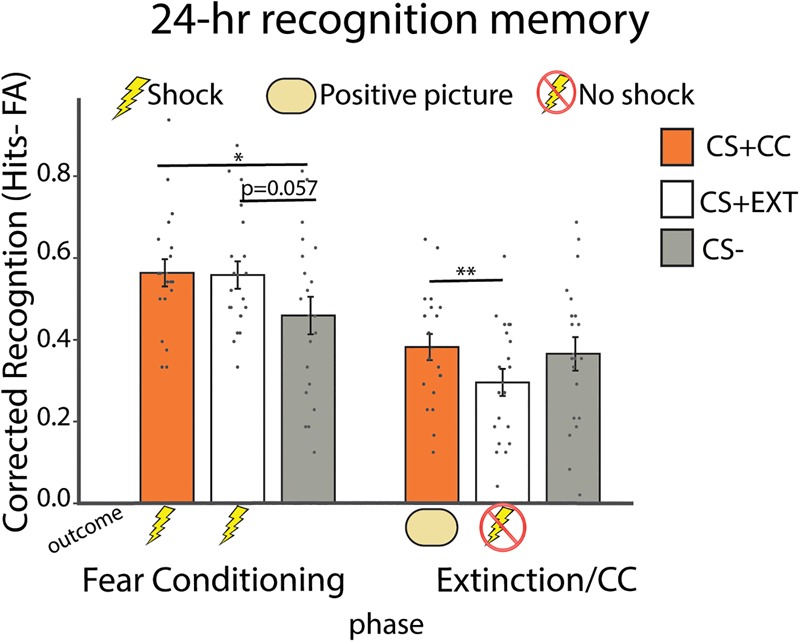Figure 3.

Twenty-four hours recognition memory results. Trial-unique (nonrepeating) exemplars from three different superordinate categories serves as conditioned stimuli (CS) and were incidentally encoded during fear conditioning and extinction/CC. Participants underwent a surprise recognition memory for these exemplars the next day. CS items encoded during fear conditioning that were from a category predictive of an electric shock (animals and tools) were recognized at a higher rate than unpaired CS− items (food) that were never paired to a shock. Different exemplars from these categories were also extinguished (CS + EXT) or paired with a positive picture (CS + CC). Participants recognized relatively more items paired with reward (CS + CC) than items that were extinguished (CS + EXT) via the mere absence of shock at the 24-h recognition memory test. Error bars represent SEM. (**) P < 0.01; (*) P < 0.05.
